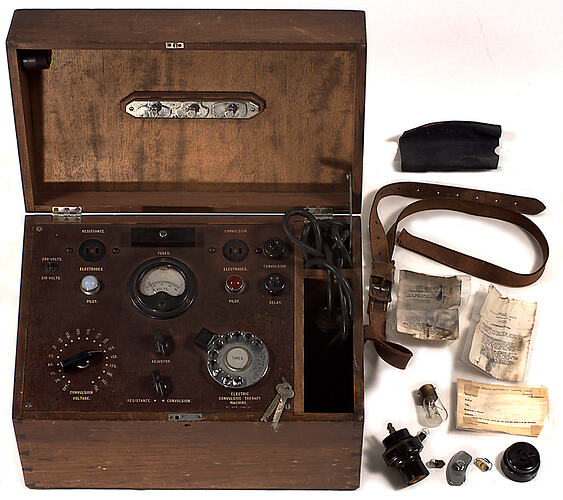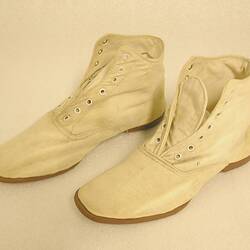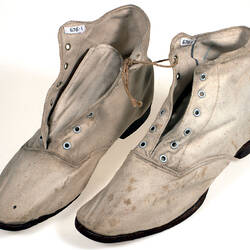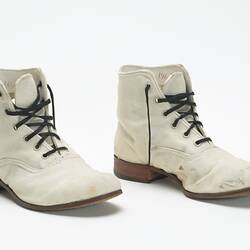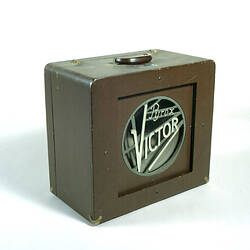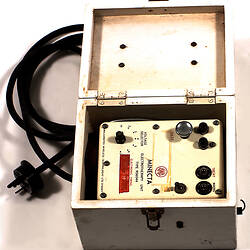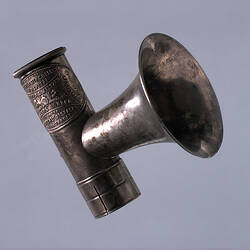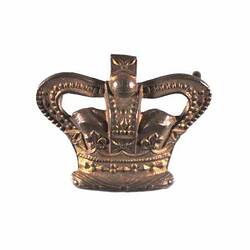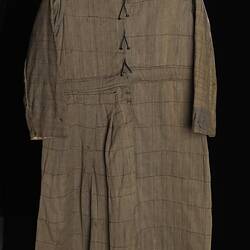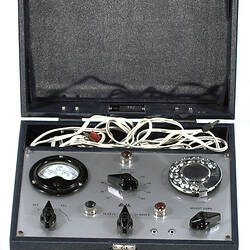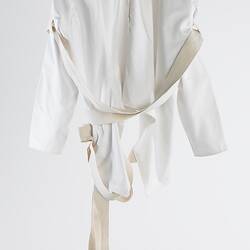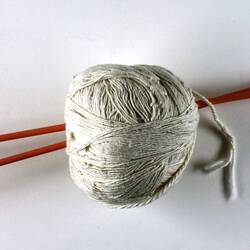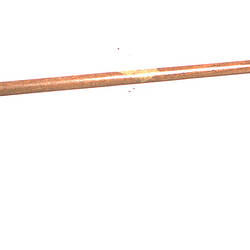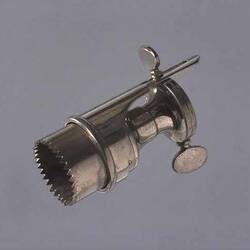The Psychiatric Services Collection is made up of over 1600 objects and covers the period of 1870-1980. The objects collected from several Victorian psychiatric institutions tell a sad story of neglect and lack of political will. Much of the museum's collection was assembled during the 1950s by Dr Charles Brothers while he was working within the system to bring about reforms.
Victoria's first 'lunatic asylum' was a bluestone barracks in extensive grounds at Yarra Bend.
By the late 1860s, the colony's population of people with psychiatric disabilities, including confused and dementing elderly people, had increased enormously.
Between 1867 and 1872, the government opened three institutions, at Kew, Beechworth and Ararat, as shelters for 'lunatics'. The buildings were huge, with large dormitories and kitchens, and extensive gardens and farmlands. Capable patients could learn and work at a trade, and a strict routine was followed, with the aim of 'imposing order on chaotic minds'. Soon these institutions were themselves overcrowded, and attempts to separate patients by type of illness faltered.
The asylum population comprised people with intellectual disabilities, confused elderly, and those with psychiatric illnesses. Treatments included restriction, isolation and sometimes, sedation, and there was limited contact with families and friends. Some people were calmed by the regular routine and the break from outside responsibility and were able to be discharged, but many stayed in institutions until they died.
Dr Brothers' investigations uncovered the institutionalised poverty and lack of hope resulting from decades of government and community neglect. The texture of daily life in an impoverished and overcrowded institution is evoked by well-worn domestic objects, battered metal chamber pots and standardised clothing. Collection objects range from uniforms, restraining devices, medications, surgical instruments, kitchen utensils, gardening tools, artworks and building fittings.
More Information
-
Keywords
Anaesthetic Equipment, Antibiotics, Artworks, Bedding, Blood Analysis, Childbirth, Cleaning Equipment, Crockery, Death & Mourning, Dental Apparatus & Instruments, Dental Hygiene, Dental Instruments, Dentistry, Diabetes, Disabilities, Electrotherapeutical Apparatus, Food & Drink Consumption, Gardening Equipment, Gender Roles, Healthcare & Medicine, Hospitals, Infectious Diseases, Institutional Care, Institutional Life, Kitchen Utensils, Laundry Equipment, Locks & Keys, Malaria Therapy, Medical Apparatus & Instruments, Medical Diagnostic Tests, Medical Equipment, Medical Institutions, Medical Research, Medicines, Mental Health Institutions, Mental Health Research, Nursing, Occupational Therapy, Pharmaceuticals, Pharmacy Equipment, Prisons, Prosthetics, Psychiatric Art, Psychiatric Hospitals, Psychiatric Institutions, Psychiatric Patients, Psychiatric Services, Recreation, Sanitation, Sexuality, Sexually Transmitted Diseases (STDs), Sterilisation Equipment, Straight Jackets, Stretchers, Surgery, Surgical Apparatus & Instruments, Surgical Instruments, Syphilis, Uniforms, Working Life
-
Localities
Victoria, Australia, Kew, Victoria, Australia, Beechworth, Victoria, Australia, Ararat, Victoria, Australia
-
Authors
-
Article types
